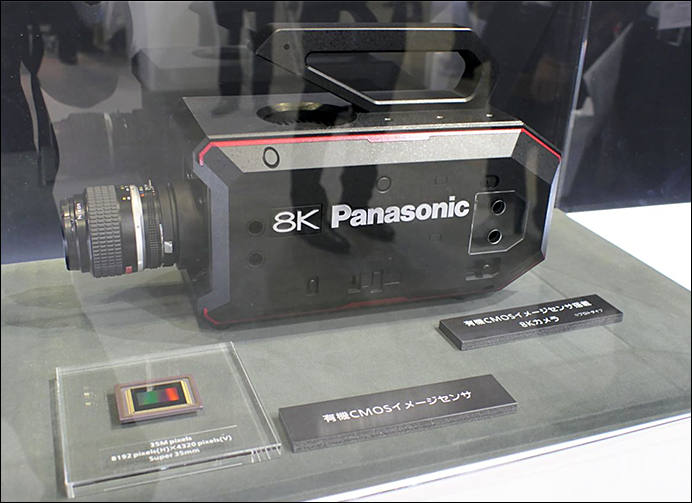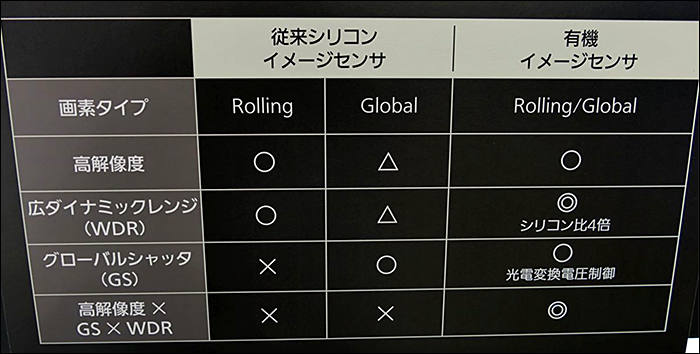
-
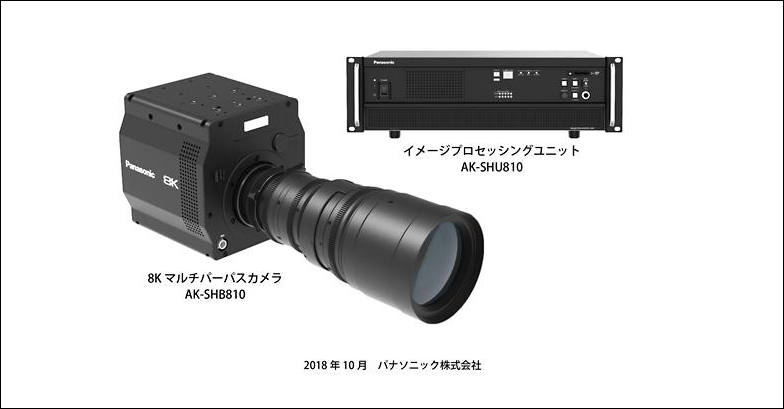
Does not look similar to GH6? :-)
Well, main things
Focus on dynamic range improvement
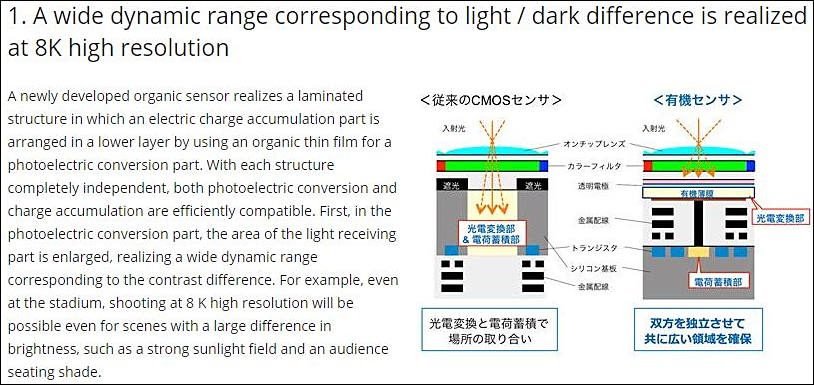
Global shutter option (still at cost!)
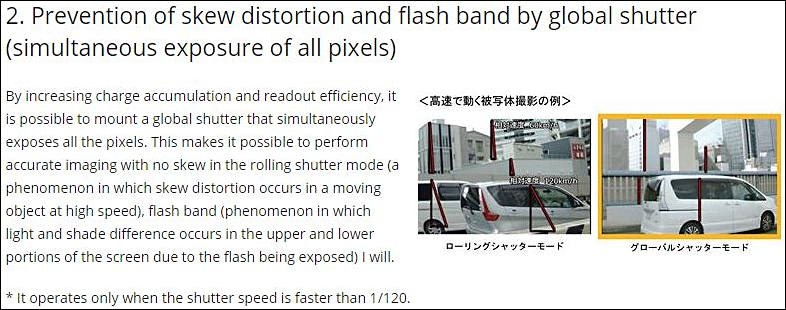
And main feature, why they made organic sensor at all, precisely adjustable sensitivity, aka no ND filters anymore
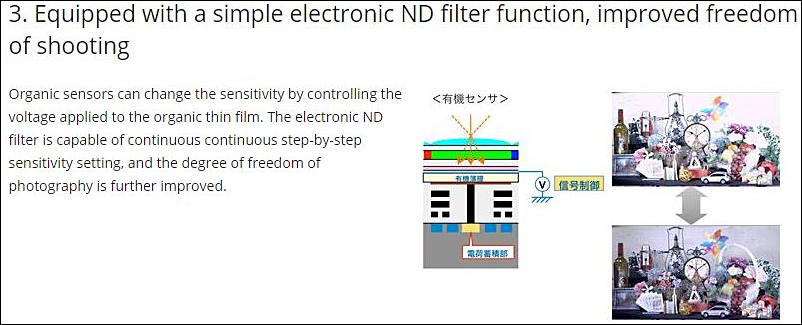
https://news.panasonic.com/jp/press/data/2018/10/jn181026-1/jn181026-1.pdf
https://news.panasonic.com/jp/press/data/2018/10/jn181026-1/jn181026-1.html
-
Not to rain on the parade, but this looks more like a engineering mock-up, than a technology that will be released by 2020.
NHK will be transmitting by December 1st this year, with their 8k Camera system.
-
Interesting--is that a Panny sensor, Sony or ?
-
@alcomposer I believe Panasonic already had these working 8K cameras at their 2018 NAB Booth, unlabeled from what I recall...
-
Sony production, most probably.
Here they just showed why all the fuss around such sensors.
Only question remains now if smartphone users will pay for further progress, it can be, as last generation of phones start to add 3 or 4 cameras, running out of options.
-
I don't see this being an indication that the GH line will get 8k any time soon. (not that I believe anyone on this thread mentioned it- but just to make my position clear)
I agree with @VK that the M43 form-factor is dead for Panasonic. From the simple fact that the tech isn't there to get 8k in a M43 size sensor, going to FF makes it much easier to push 8mp into a sensor, and still get a great result. (with current tech)
Now, that said, I also don't see 8K raw being on the horizon either for < $15k. Most probably have to wait for the BMPCC8K for that one! :-) And that will probably happen after 2020.
Quite frankly, I don't see the reason for 8K transmission. Apart from Cinema release, even 4K TV's are a gimmick unless one has a netflix subscription.
8K just lets the editor / compositor / VFX person punch in.
-
I agree with @VK that the M43 form-factor is dead for Panasonic. From the simple fact that the tech isn't there to get 8k in a M43 size sensor, going to FF makes it much easier to push 8mp into a sensor, and still get a great result. (with current tech)
Considering 8K and m43
https://www.personal-view.com/talks/discussion/20773/samsung-announce-48mp-small-sensors#Item_1
Smartphones will get 8K next year.
-
I saw that. Do you think that GH6 will maintain the M43 mount? Considering the Panasonic investment in the new L-mount, I think that the GH6 would make a swap to the newer system.
Mind you, I am not that worried about mounts these days, even Nikon retired their F-mount, as well as Canon with the EF-Mount. Personally I stopped long about thinking cameras / lenses were investments. (thanks for breaking my bubble VK!)
The gear is there to do a job, and one just gets (or rents) what does the job now.
-
It is much, much simpler to make good 8K video sensor for m43 compared to FF. Yes, DR will have issues. But the larger the sensor is - the harder is to make high frequency stuff required for video.
-
Well there could be life in the M43rd camp yet...
-
There are already widely used 20-megapixel 1-inch sensors with decent image quality using existing BSI technology, such as the one used in the Sony RX10 and RX100.
DxOMark rates the RX10 sensor at 12.6 stops of dynamic range: https://www.dxomark.com/sony-cybershot-dsc-rx10-iii-sensor-review-family-perks
This is just a bit below the 13 stop rating they have for the sensor on the GH5.
Micro 4/3 is almost double the sensor area of a 1-inch type sensor, so a 33-megapixel sensor (needed for 8K) should be achievable with similar size photosites as existing 20-megapixel 1-inch sensors. Shouldn't require dramatically new technology to achieve this.
-
IBC update from EOSHD (our interview will be soon)
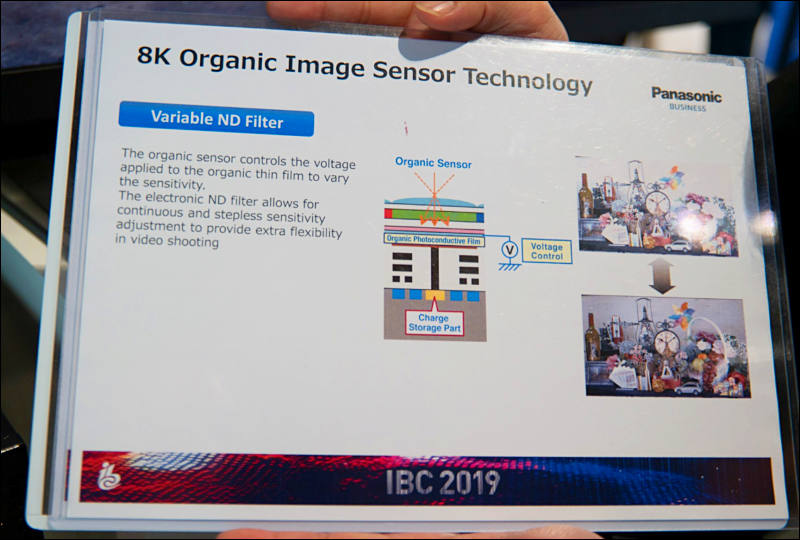
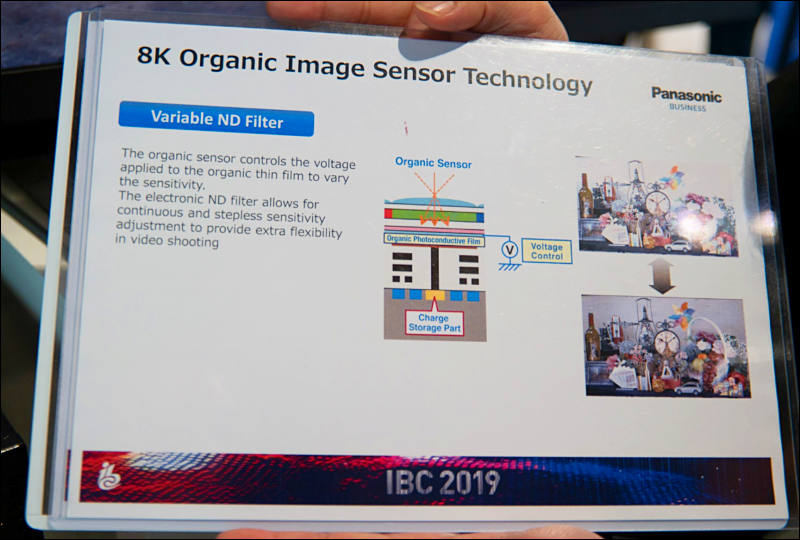
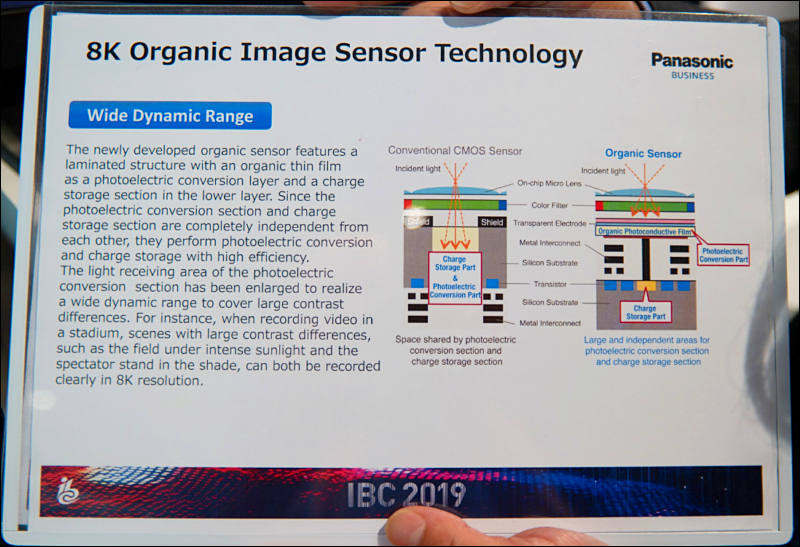
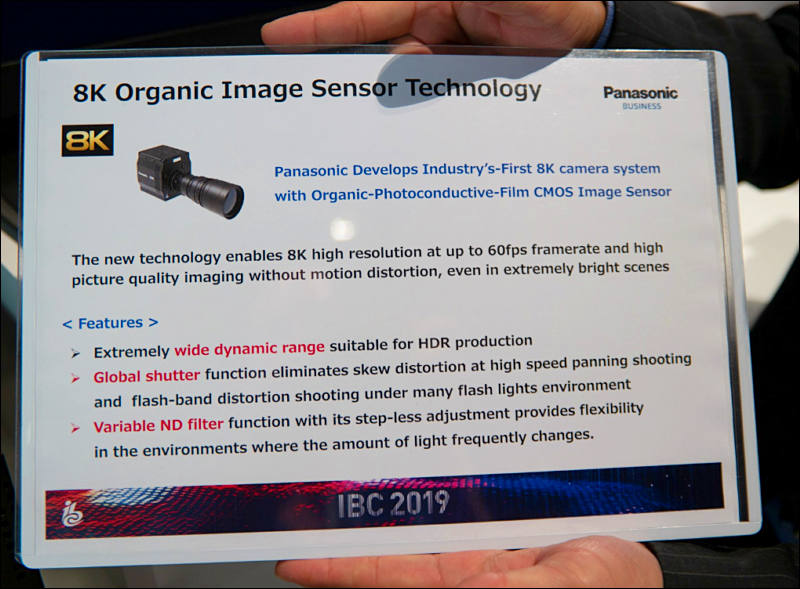

 sa10094.jpg800 x 540 - 72K
sa10094.jpg800 x 540 - 72K
 sa10094.jpg800 x 540 - 72K
sa10094.jpg800 x 540 - 72K
 sa10096.jpg800 x 547 - 92K
sa10096.jpg800 x 547 - 92K
 sa10097.jpg800 x 589 - 83K
sa10097.jpg800 x 589 - 83K -
Our interview
-
VK you think will see more of this type of sensor on other cams in near future, or mainly on this
-
Very hard to say. As it had been so many talks and except this prototype we don't have any similar sensors in real products. May be it is same serious thing as with OLED that will never become usable as everyday monitors.
-
There are some talks that the chipset and sensor generates tons of heat - which limits its usage.
-
Nothing must generate lot of heat, as it can be recorded using 4 existing LSIs for 4K.
-
In the Panasonic Business interview above he states that the "organic sensor" is actually a traditional CMOS sensor with an organic film layer. The layer can act as a variable ND filter, global shutter, and a sort of graduated ND capable of extending DR by 1-2 stops. He says that after the Olympics the tech will come to their cinema camera lineup and even down to the Lumix lineup.
I'd say that answers most questions conclusively, except for price. I'd be happy to buy a new GH cam with this tech for the variable ND feature alone.
-
If the thin film organic layer is acting as a variable ND, and as a shutter - would not that by itself make a global shutter sensor? In video mode it would engage the shutter - as happens with mechanical shutters? If this is the extent of the tech, (ie- evolutionary to CMOS) then it would make complete sense to include in all cameras. Even to remove the mech shutter completely.
-
QUESTION: Can you talk a little bit about the sensor of the camera?
BERGERON: We need to keep things straight because we [Panasonic] have two 8K sensors right now. The 8K sensor in our ROI system is a CMOS sensor. It's not unlike some of the other CMOS sensors we have like the EVA1 or the VariCam, it’s just higher resolution. It still has great dynamic range and lots of pixels. It even has great sensitivity with the added resolution since it’s a full frame sensor.
The 8K ROI sensor should not be confused with our 8K Organic sensor. The 8K Organic sensor is currently in development and has not been designated to specific camera designs yet. The 8K Organic sensor is a Super 35 sensor but its new technology should achieve even better sensitivity and dynamic range than the CMOS 8K ROI sensor. Panasonic felt a Super 35 sensor will make a camera employing it eligible for a wider variety of lenses - especially if you want a zoom lens - for an 8K production.
https://www.panasonicvisualsystems.com/industries/broadcast/8kroi
-
The “organic CMOS image sensor” is an image sensor with a completely different structure from the conventional image sensor. Simultaneous realization of high resolution, wide dynamic range, and global shutter performance by taking advantage of the unique “laminated sensor” that has a completely independent structure of “organic photoelectric conversion film” that performs photoelectric conversion and “silicon circuit section” that stores charges. Is possible. At this exhibition, we will introduce the “8K high-resolution organic CMOS image sensor” that realizes these features.
Howdy, Stranger!
It looks like you're new here. If you want to get involved, click one of these buttons!
Categories
- Topics List23,976
- Blog5,724
- General and News1,351
- Hacks and Patches1,153
- ↳ Top Settings33
- ↳ Beginners255
- ↳ Archives402
- ↳ Hacks News and Development56
- Cameras2,361
- ↳ Panasonic991
- ↳ Canon118
- ↳ Sony156
- ↳ Nikon96
- ↳ Pentax and Samsung70
- ↳ Olympus and Fujifilm100
- ↳ Compacts and Camcorders300
- ↳ Smartphones for video97
- ↳ Pro Video Cameras191
- ↳ BlackMagic and other raw cameras116
- Skill1,961
- ↳ Business and distribution66
- ↳ Preparation, scripts and legal38
- ↳ Art149
- ↳ Import, Convert, Exporting291
- ↳ Editors191
- ↳ Effects and stunts115
- ↳ Color grading197
- ↳ Sound and Music280
- ↳ Lighting96
- ↳ Software and storage tips267
- Gear5,414
- ↳ Filters, Adapters, Matte boxes344
- ↳ Lenses1,579
- ↳ Follow focus and gears93
- ↳ Sound498
- ↳ Lighting gear314
- ↳ Camera movement230
- ↳ Gimbals and copters302
- ↳ Rigs and related stuff272
- ↳ Power solutions83
- ↳ Monitors and viewfinders339
- ↳ Tripods and fluid heads139
- ↳ Storage286
- ↳ Computers and studio gear560
- ↳ VR and 3D248
- Showcase1,859
- Marketplace2,834
- Offtopic1,319







